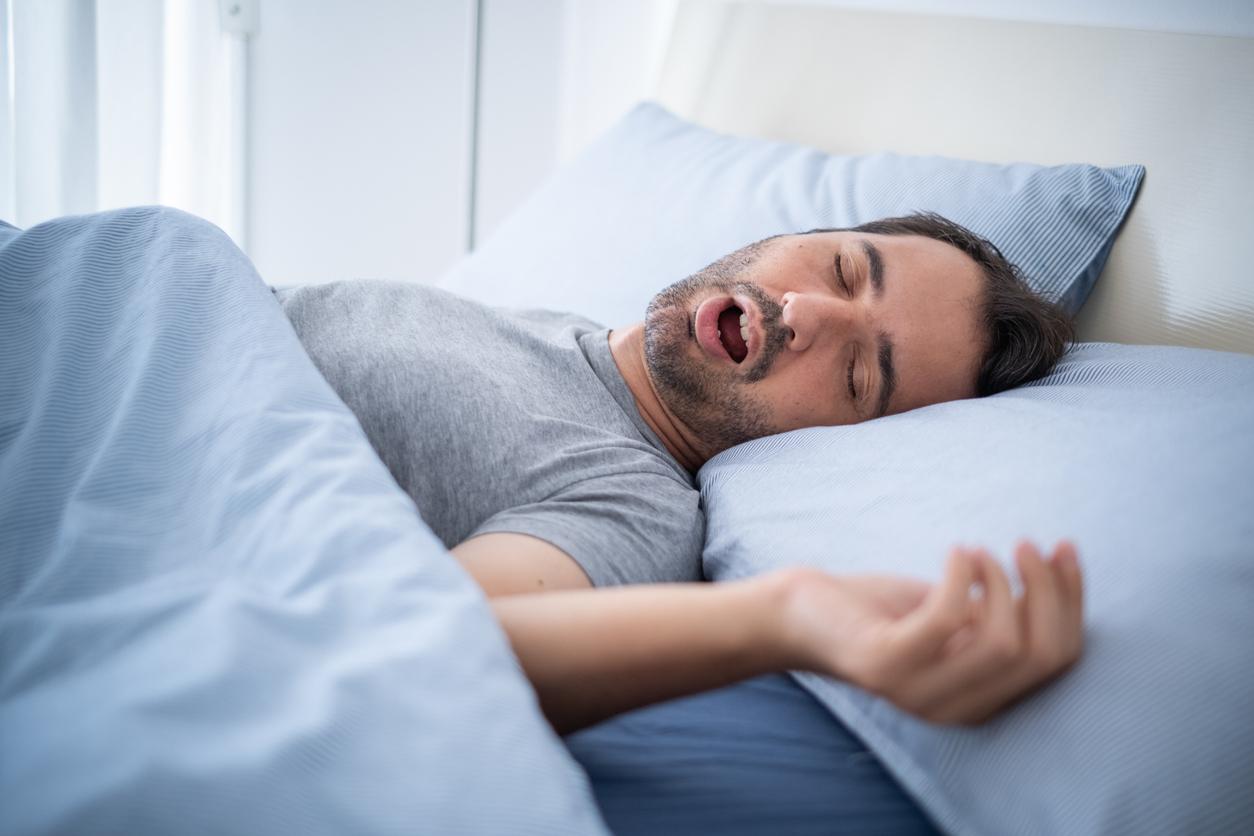Professor Jean-Louis Pépin explains how to improve the care of people who suffer from sleep apnea.

- Professor Jean-Louis Pépin provided elements likely to improve the care of people suffering from sleep apnea.
- To improve the management of sleep apnea in France, one of the major challenges is to increase compliance with CPAP.
- To do this, Jean-Louis Pépin highlights two factors that favor stopping treatments: having a low socio-economic status and/or a complicated couple life.
During the major Sleep Congress® which was recently held in Lille, Professor Jean-Louis Pépin, member of the pulmonology-physiology department at Grenoble Alpes University Hospital, provided elements likely to improve the care of people suffering from of sleep apnea.
Sleep apnea: “very heterogeneous patients”
“We are faced with patients who are very heterogeneous in their presentation and in their evolution,” he begins. “Sleep apnea is in fact a chronic disease which has very different trajectories of evolution, aggregation of comorbidities and complications from each other”, he continues.
“Today, we treat patients suffering from sleep apnea mainly at night with continuous positive pressure or ‘CPAP’ (1,600,000 people benefit from this device today in France)”, explains Jean-Louis Pépin. “But the discontinuation rates of these treatments are high: 23% after one year, 37% after two years and almost 48% after three years, which increases the risks of mortality and cardiovascular events,” he specifies.
Sleep apnea: these little-known factors that favor stopping treatments
To improve the management of sleep apnea in France, one of the major challenges is therefore to increase compliance with CPAP. To do this, Jean-Louis Pépin highlights two factors that favor stopping treatments: having a low socio-economic status and/or a complicated couple life.
“Patients living in the lowest economic conditions record about one hour less treatment compliance than average. If you live in a small apartment, with multiple individuals and many worries in your daily life, you you are of course much less likely to comply with your treatment. These are things which need to be looked at, but which we do not bring up much in our interviews, which we do not put in our medical files and which we do not ‘not registered in our research cohorts’, laments the professor.
Regarding life as a couple, our pulmonologist develops: “If the patient is a young couple with children and working hours, they will not have the same sleep duration as if they are a retired couple. Furthermore, it has been shown that when a person suffering of sleep apnea has poor marriage quality, her symptoms will not improve even if she does her CPAP correctly. Conversely, if my marriage quality is excellent, I will have a very great improvement in my symptoms even with average compliance with my treatments. All these dimensions are not looked at by providers, and very little looked at by doctors.”
Sleep apnea: sketch of those who stop their treatment
Other factors, this time better identified and taken into account by the medical profession, can also lead to non-compliance with CPAP. “Women, patients who are of extreme ages (that is to say who are either very young or very old) and patients who suffer from comorbidities (COPD, diabetes, hypertension, etc.) are those who have the most risk of stopping their treatment for sleep apnea. For example, a 40-year-old woman who suffers from diabetes and COPD in addition to sleep apnea has a three times greater risk of ‘stop CPAP than other patients’, recalls Jean-Louis Pépin. “The presence of central apnea under CPAP is also associated with a greater probability of stopping care and poorer compliance,” he adds.
“The assessment of all these risks by doctors is important, because cognitive-behavioral support before starting CPAP improves insomnia and treatment compliance scores (+61 minutes)”, the doctor finishes. “We must not stick to caricatures, we must really modulate and personalize the treatments for each patient”concludes Professor Jean-Louis Pépin.
Sleep apnea: origin, symptoms and diagnosis
Sleep apnea-hypopnea syndrome, often shortened to “sleep apnea”, is a pathology which originates in the pharynx: the soft structures which compose it relax during the night and sometimes begin to vibrate as air passes through. In more problematic cases, the pharynx closes and the passage of air to the lungs becomes difficult (we speak “hypopnea” when the closure is incomplete and “apnea” when the closure is total, NDRL). A transient drop in oxygen in the blood is then observed.
Sleep apnea ends with a micro-wake-up call. Thus, the night of an apneic individual is interspersed with a multitude of micro-awakenings.
The diagnosis of sleep apnea is established by carrying out tests in a center specializing in sleep disorders or by consulting a doctor competent in this field. Signs that may indicate the presence of sleep apnea include snoring, excessive sleepiness and fatigue.


















